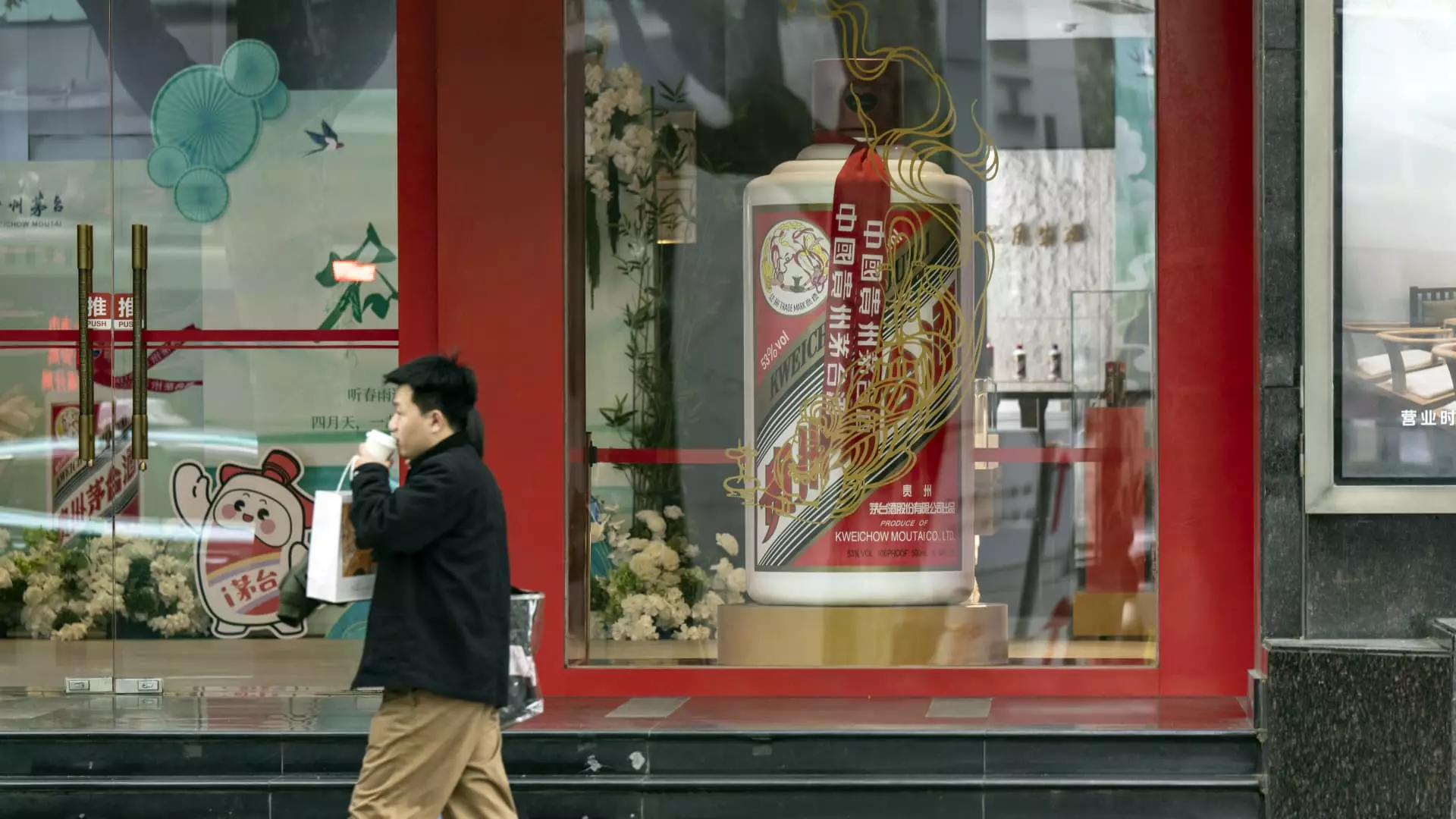The recent decline in wholesale prices of Flying Fairy, a prestigious Chinese alcohol brand, has raised concerns about the state of China’s economy. The 5% drop in prices over the span of a week and the overall 30% decrease since September 2021 indicate a significant shift in market dynamics. Nomura analysts have pointed out that during the housing price boom from 2015 to 2021, Flying Fairy’s wholesale prices skyrocketed by nearly 360%. This suggests a correlation between the performance of this luxury brand and broader economic trends in China.
Flying Fairy, also known as Feitian Moutai, holds a revered status in Chinese society as a symbol of prestige and luxury. The traditional baijiu liquor, made from red sorghum, is often used for government gifts, high-level business deals, and weddings. The collector’s value of older bottles adds to its allure. However, the recent decline in wholesale prices raises questions about the company’s future performance. While Morningstar’s senior equity analyst, Jennifer Song, has noted that Kweichow Moutai has maintained wide profit margins, the broader implications of the price drop remain uncertain.
Market Position and Investor Sentiment
Kweichow Moutai’s position as the largest stock by market capitalization in the Shanghai composite underscores its significance in the Chinese market. Despite a 13% drop in its value this year, the company remains a key player in exchange-traded funds tracking mainland Chinese stocks. However, the lack of investor confidence in bottom fishing amidst the price decline reflects a shift in market dynamics. The potential impact on future earnings and investor sentiment highlights the need for a strategic response from the company.
Anecdotal evidence about the economy, such as the drop in existing home prices and duty-free sales in Hainan, paints a bleak picture of high-end baijiu demand. The Nomura analysts’ observations regarding the decline in home prices across major Chinese cities and the fall in duty-free sales suggest broader economic challenges. The second-quarter weakness in baijiu demand coupled with changing consumer behaviors around traditional customs like weddings further complicates the market landscape for brands like Flying Fairy.
While the price decline of Flying Fairy may be attributed to market arbitrage, the long-term outlook remains uncertain. Market analysts like Huatai Financial Holdings remain optimistic about the company’s potential, citing its strong brand power and effective operations. However, the need for strategic interventions to boost investor confidence and adapt to changing market conditions is evident. As investors navigate the shifting landscape of Chinese luxury brands, a proactive approach to engaging with consumer trends and economic indicators will be crucial for sustaining growth.
The declining prices of Flying Fairy serve as a microcosm of broader economic trends in China. The evolving market dynamics, changing consumer behaviors, and macroeconomic influences underscore the need for strategic foresight and adaptability. As the market recalibrates in response to these challenges, companies like Kweichow Moutai must leverage their strengths and address weaknesses to navigate the complex terrain of the Chinese luxury goods market.

